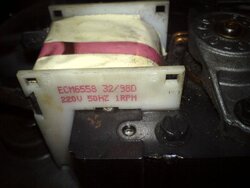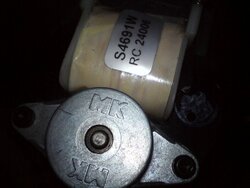Stovensen
Minister of Fire
The burn was asymmetrical all the time until I plugged the ignitor-hole.
The ash clog in your exhaust "manifold" can most likely contribute to an uneven airflow above the burnpot, so cleaning that area is very important to ensure good draft.
From reading this thread I understand that your Advantage Plus has a different ducting in the housing between the heatexchangertubes and the combustionblowerhousing ( AKA "the exhaust manifold" ). A Quest Plus is rather difficult to clean in this area, since it can't be dismantled... I'll have to use a long bottlecleanerbrush and a homemade hose for the vac. This cleaning, however, is very effective... the stove works like brand new after each cleaning.
It's very easy to plug the igniter-hole. All you need is a bolt and nut of the right size.
Safety first... if you're planning to unplug the ignitor as well, take care... first unplug the mains, and the "hot" connectors to the ignitor must be insulated properly and fastened to something, so that they by no means can get to touch anything :exclaim:
Good luck
Bo
The ash clog in your exhaust "manifold" can most likely contribute to an uneven airflow above the burnpot, so cleaning that area is very important to ensure good draft.
From reading this thread I understand that your Advantage Plus has a different ducting in the housing between the heatexchangertubes and the combustionblowerhousing ( AKA "the exhaust manifold" ). A Quest Plus is rather difficult to clean in this area, since it can't be dismantled... I'll have to use a long bottlecleanerbrush and a homemade hose for the vac. This cleaning, however, is very effective... the stove works like brand new after each cleaning.
It's very easy to plug the igniter-hole. All you need is a bolt and nut of the right size.
Safety first... if you're planning to unplug the ignitor as well, take care... first unplug the mains, and the "hot" connectors to the ignitor must be insulated properly and fastened to something, so that they by no means can get to touch anything :exclaim:
Good luck
Bo





